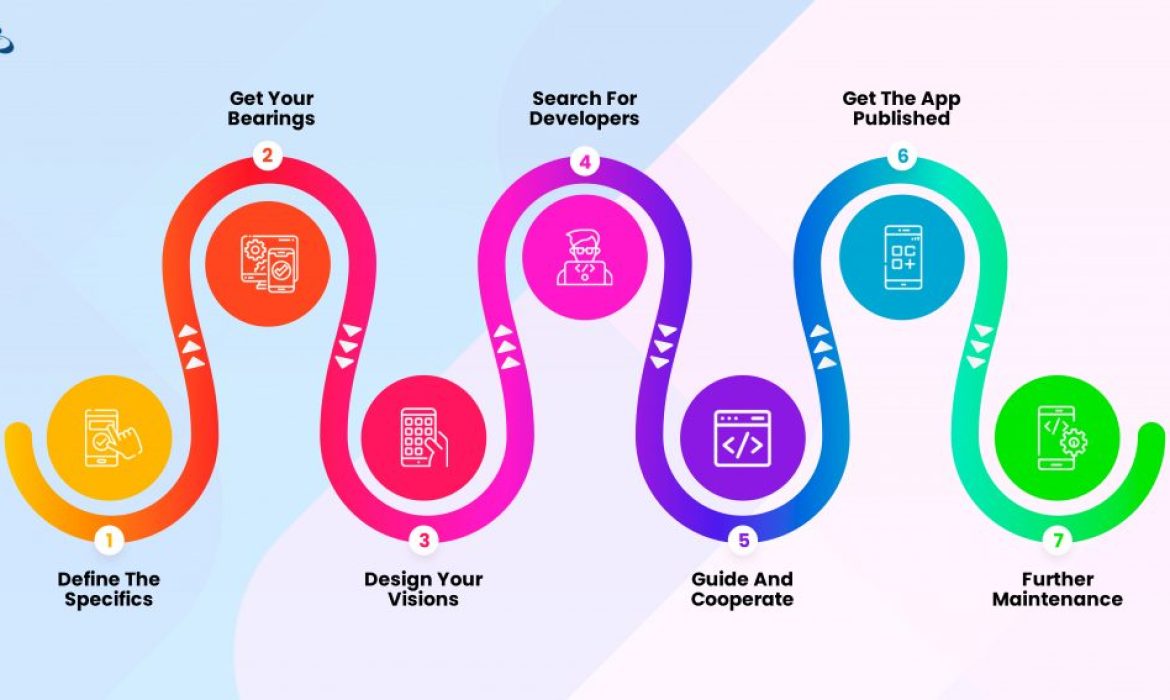ISO 9001:2015 , ISO 27001:2022
Creating a successful mobile app involves a comprehensive development process. This step-by-step guide will walk you through the essential stages of mobile app development:
1. Idea and Conceptualization:
Identify a Problem or Need: Start by identifying a specific problem or need that your app will address. Consider the target audience and their pain points.
Market Research: Conduct market research to understand the competition and potential demand for your app.
Define Goals: Clearly define the goals and objectives of your app. What do you want to achieve with it?
2. Planning:
Create a Project Plan: Develop a detailed project plan outlining tasks, timelines, and resource allocation.
Budgeting: Estimate the project’s budget, considering development costs, marketing, and ongoing maintenance.
Choose a Platform: Decide whether you’ll develop for iOS, Android, or both platforms. This choice may impact the development tools and languages you use.
3. Design:
Wireframing: Create wireframes to visualize the app’s layout and user flow.
UI/UX Design: Design the user interface (UI) and user experience (UX) elements, ensuring a user-friendly and visually appealing design.
4. Development:
Front-End Development: Develop the app’s front-end, including user interfaces and interactions.
Back-End Development: Build the back-end infrastructure, including databases, servers, and APIs.
Coding: Write the app’s code using the chosen programming languages (e.g., Java, Swift, Kotlin, React Native, Flutter).
Testing: Continuously test the app for functionality, performance, and security throughout the development process.
5. Testing and Quality Assurance:
Functional Testing: Ensure all features work as intended.
Usability Testing: Collect user feedback to enhance the app’s user experience.
Performance Testing: Test the app’s speed, responsiveness, and scalability.
Security Testing: Identify and address vulnerabilities to protect user data.
6. Deployment:
App Store Submission: Prepare the app for submission to app stores (Google Play Store, Apple App Store).
App Store Guidelines: Comply with app store guidelines, including size limits, content restrictions, and review processes.
Release: Publish the app to the app stores and promote it.
7. Marketing and Promotion:
Marketing Strategy: Develop a marketing plan to promote the app through social media, advertisements, and other channels.
App Store Optimization (ASO): Optimize the app’s store listings with relevant keywords and engaging visuals.
User Acquisition: Attract users through various marketing campaigns.
8. Maintenance and Updates:
Bug Fixes: Continuously monitor user feedback and fix any reported bugs.
Feature Updates: Enhance the app by adding new features and improvements based on user feedback and market trends.
Compatibility: Ensure the app remains compatible with the latest operating system versions.
9. Analytics and Monitoring:
User Analytics: Use analytics tools to track user behavior, engagement, and retention.
Performance Monitoring: Monitor the app’s performance and server uptime.
Feedback: Collect and analyze user feedback to make informed decisions for future updates.
10. Scaling:
Scaling Infrastructure: As user demand grows, scale your server infrastructure to handle increased traffic.
Global Expansion: Consider expanding the app to new regions and languages.
Mobile app development is an iterative process, and continuous improvement is essential for long-term success. Stay engaged with your user base, keep an eye on emerging technologies, and adapt your app accordingly to meet changing needs and expectations.
Flutter app development company in mumbai


